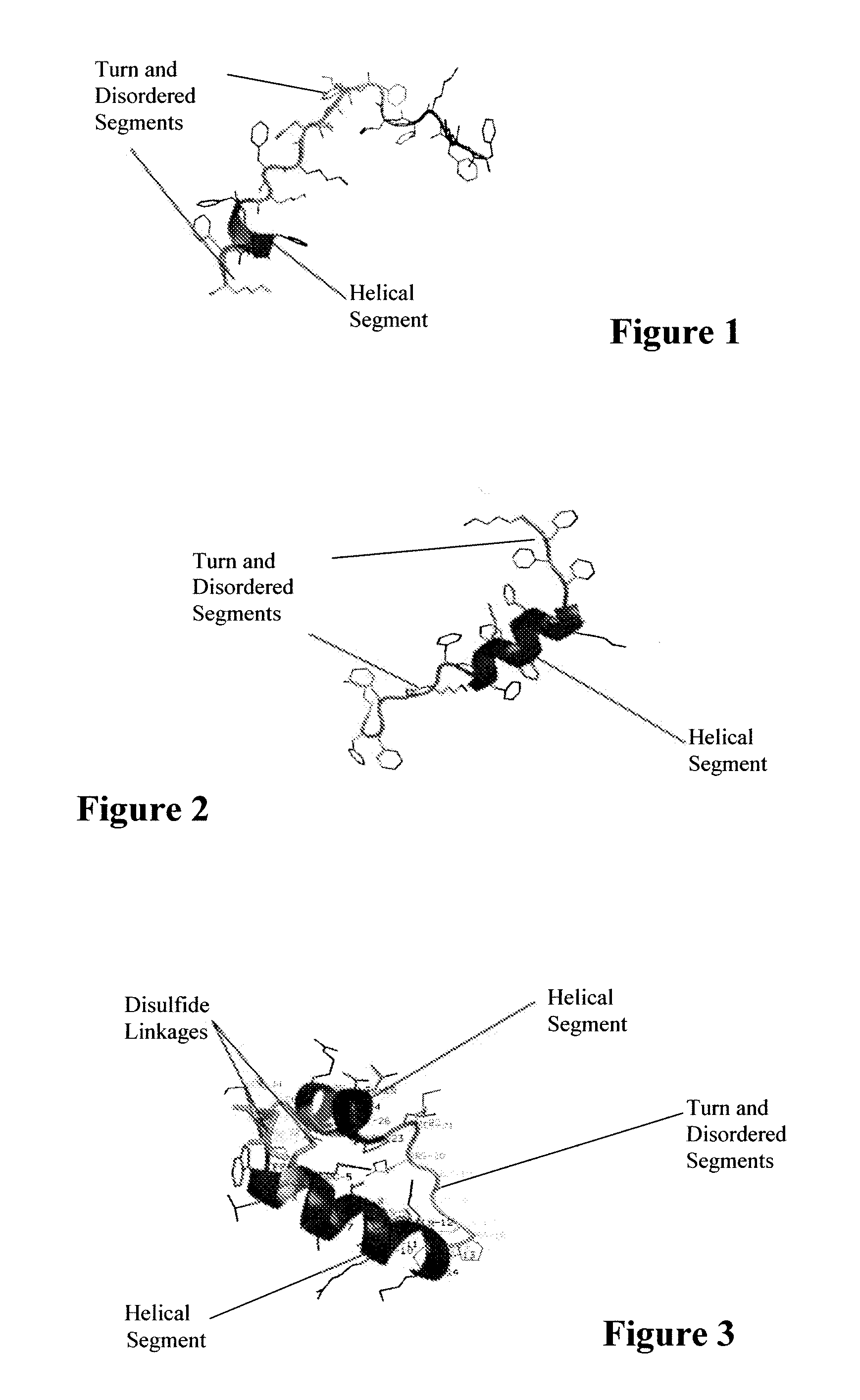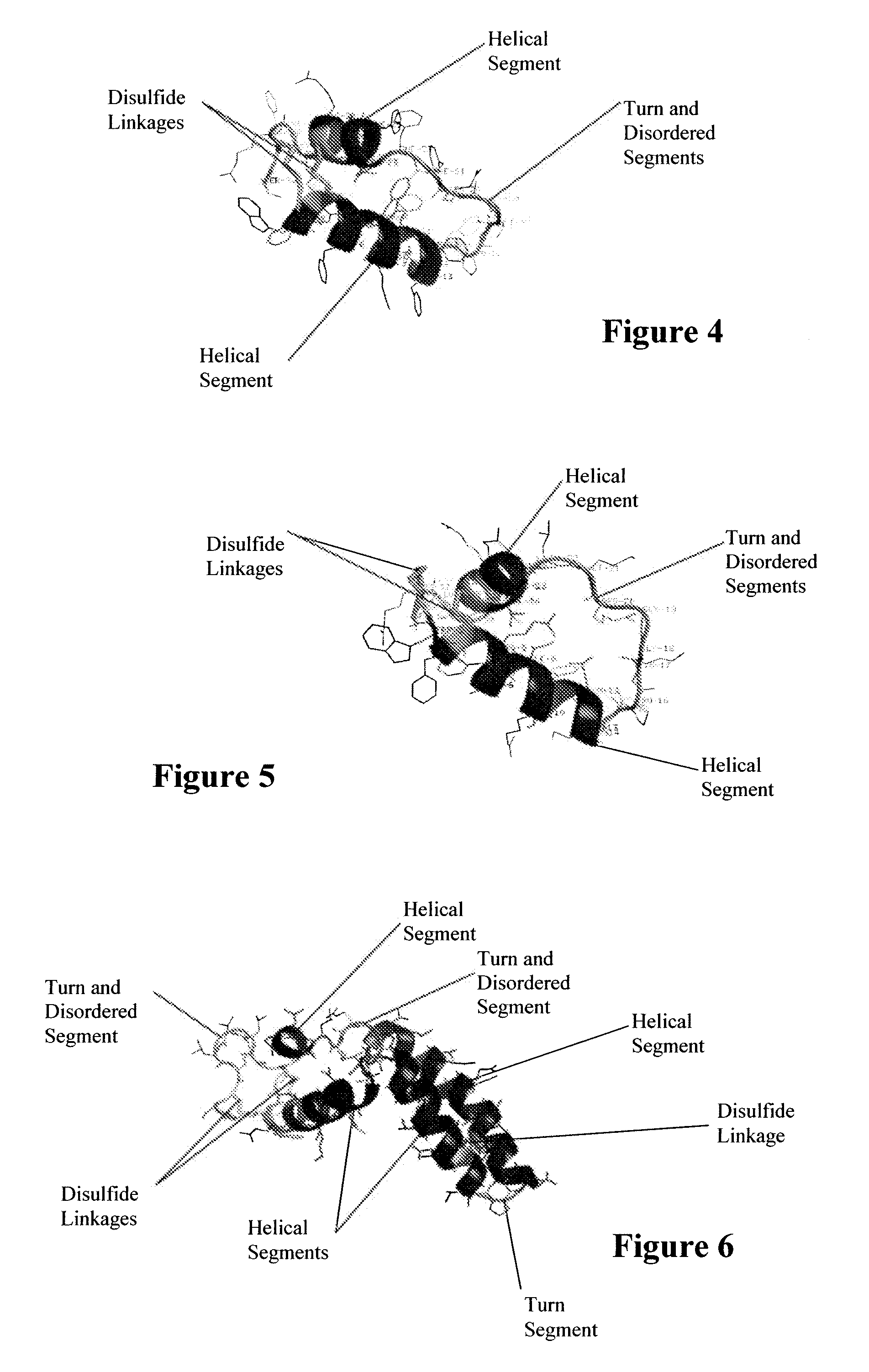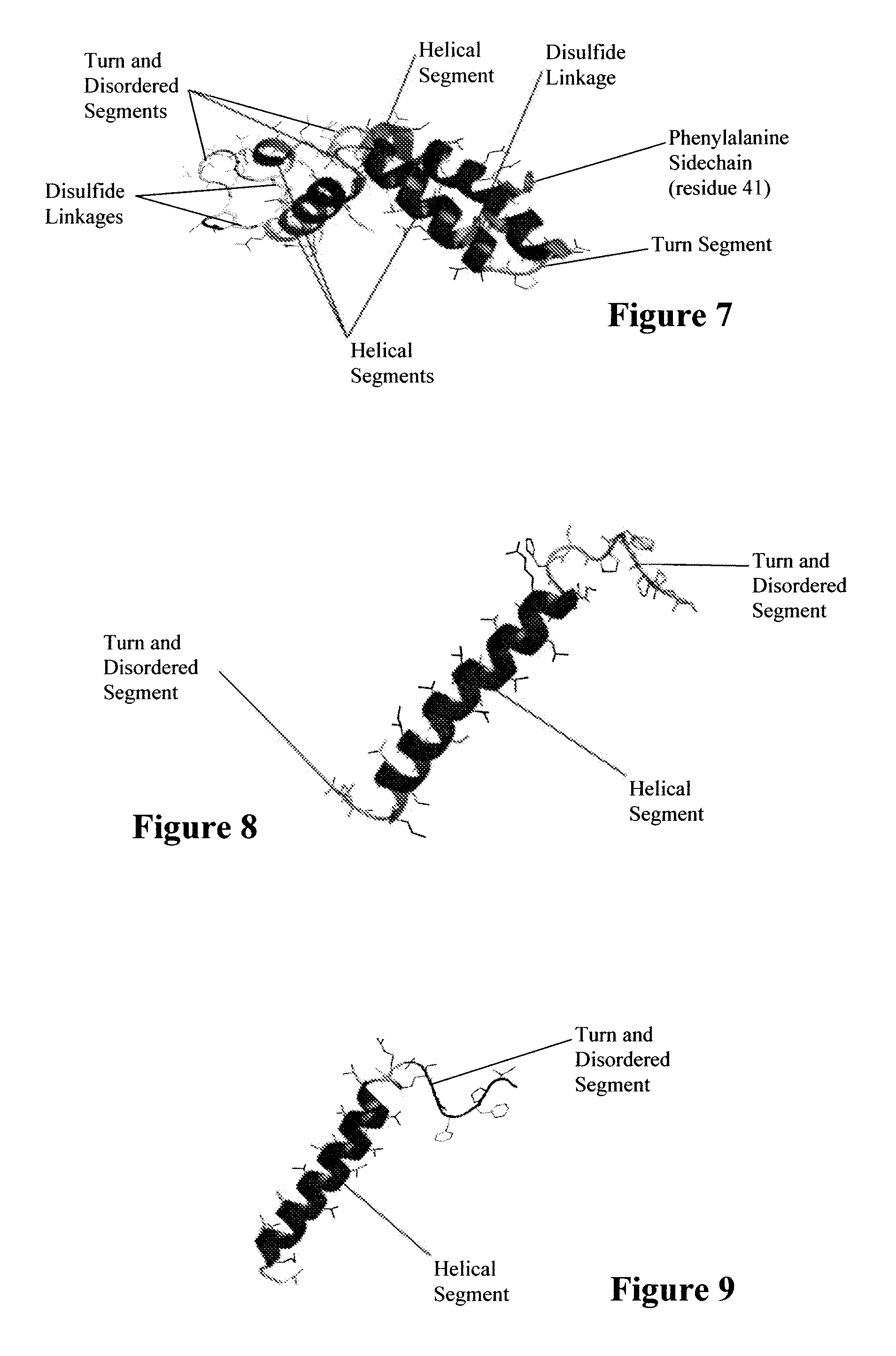Synthetic lung surfactant and use thereof
a technology of synthetic lung surfactant and composition, which is applied in the direction of phosphorous compound active ingredients, peptide/protein ingredients, peptide sources, etc., can solve the problems of increasing the cost and number of monitoring tests during manufacture including added bioassays and activity assays, severe impairments in respiratory function that can be fatal, and no synthetic lung surfactant composition, etc., to achieve enhanced adsorption and film respreading of analog compounds, the effect of reducing the surface tension
- Summary
- Abstract
- Description
- Claims
- Application Information
AI Technical Summary
Benefits of technology
Problems solved by technology
Method used
Image
Examples
example 1
Synthesis of Phosphatidylglycerol Lipid Analogs and Intermediates
1,2-dihexadecyl-3 phosphoglycerol
[0123]1,2-Dihexadecyl-3 phosphoglycerol was synthesized according to the following protocol. Freshly distilled phosphorus oxychloride (boiling range 105-107° C.) (410 mg, 2.64 mmol) was cooled in an ice-bath. A solution of 1,2-dihexadecylglycerol (1.19 g, 2.20 mmol) and Et3N (334 mg, 3.3 mmol) in 15 mL of THF was added in dropwise to the phosphorus oxychloride with continuous stirring and the mixture was then stirred at r.t. for 2 h. Solketol (349 mg, 2.64 mmol) in 10 mL of THF and Et3N (668 mg, 6.6 mmol) was added dropwise. The temperature of the reaction mixture was raised and after 2 h the reaction mixture was filtered by suction to remove the precipitated triethylamine hydrochloride. 1 M Na2CO3 (aq) was added to the filtrate and stirring continued for 15 h at r.t. Acetone (30 mL) was added to the upper THF phase and the precipitate was removed by filtration. The filtrate was evapora...
example 2
Alternative Synthesis of Phosphonodiol Intermediate
[0135]Intermediate diol preparation can also be carried out according to Scheme 3, infra. Diethyl 3,4-isopropylidene-3,4-dihydroxybutyl-1-phosphonate (N, n=2) was prepared beginning with a mixture of iodide M (3.34 g, 13.1 mmol) and triethylphosphite (8.67 g, 52.2 mmol), which was heated for 24 h at 145-150° C. The excess triethylphosphite was removed by vacuum distillation to get the product (N).
[0136]Characterization data: 1H NMR (CDCl3, 400 MHz): 3.95 (m, 6H), 3.39 (m, 1H), 1.67 (m, 4H), 1.18 (m, 12H) ppm; 13C NMR (CDCl3, 100 MHz): 108.7, 75.2 (d, J=17.1 Hz), 68.5, 61.3, 26.6, 26.5, 25.2, 21.5 (d, J=141.3 Hz), 16.2 ppm; 31P NMR (CDCl3, 162 MHz): 31.9 ppm; IR (neat, νmax): 1370, 1248, 1223 cm−1.
[0137]Diethyl 3,4-dihydroxybutyl-1-phosphonate (O, n=2) was prepared using the obtained product (N). A solution of N (570 mg, 2.14 mmol) and pTSA (60 mg, 0.32 mmol) in MeOH (20 mL) was stirred overnight at r.t. Sufficient NaHCO3(s) was adde...
example 3
Representative Synthesis and Chemical Characterization of Super Mini-B Peptide (SEQ ID NO: 13)
[0142]This example is generally applicable to the synthesis of the majority of the peptides in this patent, although it also contains features specific for Super Mini-B peptide (SEQ ID NO: 13). Chemical synthesis of Super Mini-B was done as a stepwise process with initial assembly of linear sequence using an Applied Biosystems ABI 431A solid phase peptide synthesizer configured for FastMoc™ chemistry (Fields et al., “HBTU Activation for Automated Fmoc Solid-phase Peptide Synthesis,”Peptide Res 4:95-101 (1991), which is hereby incorporated by reference in its entirety). A low substitution (0.3 mmole / g) pre-derivatized Fmoc-serine (tBu) resin was used to minimize the formation of truncated sequences. To achieve appropriate pairing of disulfide residues to maintain key molecular connectivities, Cys residues at positions 8 and 40 in the linear Super Mini-B molecule were coupled by using acid-la...
PUM
| Property | Measurement | Unit |
|---|---|---|
| structure | aaaaa | aaaaa |
| surface active | aaaaa | aaaaa |
| width | aaaaa | aaaaa |
Abstract
Description
Claims
Application Information
 Login to View More
Login to View More - R&D
- Intellectual Property
- Life Sciences
- Materials
- Tech Scout
- Unparalleled Data Quality
- Higher Quality Content
- 60% Fewer Hallucinations
Browse by: Latest US Patents, China's latest patents, Technical Efficacy Thesaurus, Application Domain, Technology Topic, Popular Technical Reports.
© 2025 PatSnap. All rights reserved.Legal|Privacy policy|Modern Slavery Act Transparency Statement|Sitemap|About US| Contact US: help@patsnap.com



